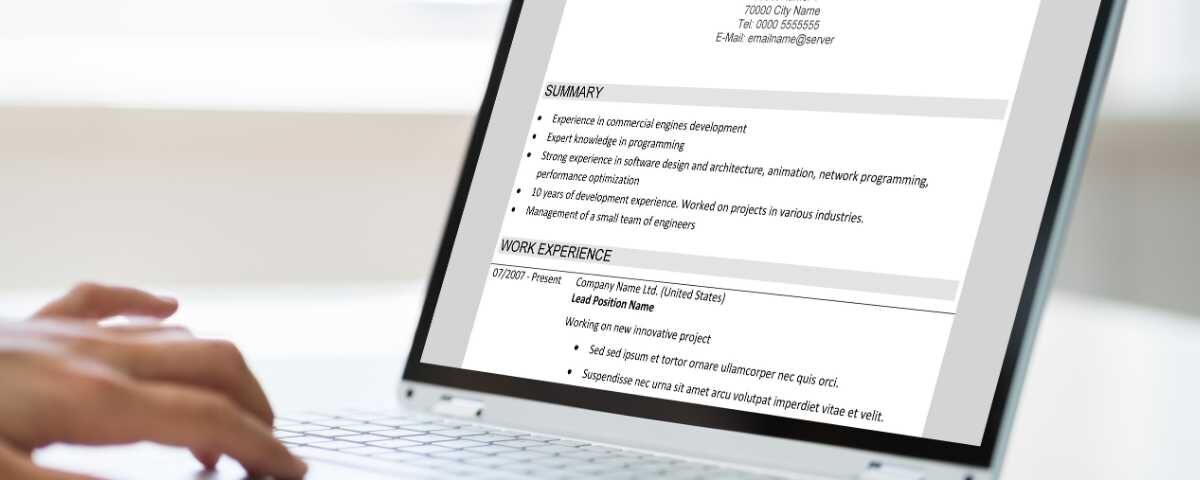
Top Creative Resume for Design Students: Examples and Tips for Success
August 2, 2025
Best Extracurricular Activities in Resume to Boost Your Job Prospects
August 16, 2025Resume Checklist for Freshers: Things to Check Before Submitting Your Resume
Starting your job search can feel like a huge mountain to climb, especially when you’re fresh out of college or just beginning your career journey. But guess what? Your resume is your very first handshake with a potential employer, and it’s your chance to make an unforgettable first impression that captures the recruiter’s attention. Think of it as your personal marketing brochure, showcasing your unique skills and experiences and putting your best foot forward. A well-structured resume is absolutely crucial for this, as it helps hiring managers quickly grasp your potential and see how you fit into their team.
This isn’t just a document; it’s a strategic tool designed to market your capabilities and potential. For you, as a fresher, this means every detail counts even more. The way you present your experiences, even if they aren’t traditional jobs, is how you sell your value to a prospective employer. Make sure to include all the information relevant to your background and skills, so employers can fully assess your fit for the role.
That’s where a comprehensive resume checklist for freshers comes in handy. It’s your secret weapon, guiding you step-by-step to create an application that truly stands out and increases your chances of getting noticed in job applications. This systematic approach helps you mitigate common risks, ensuring you don’t miss any vital details that could prematurely end your application. It also helps you maximise every opportunity to highlight your strengths and put your foot forward to showcase what makes you unique.
You’ll find tons of amazing online resources and resume writing tips that can help you craft a good resume that highlights your abilities, even if your professional experience is limited. Leverage your LinkedIn profile for resume analysis or improvement, and embrace these tools as your personal resume-building toolkit, designed to empower you on this journey.
Remember, employers are always on the lookout for candidates who have skills relevant to the job they’re applying for. This means tailoring your resume to each job description isn’t just a good idea; it’s essential. You’re showing them, “Hey, I’m the piece you’ve been searching for!” This isn’t merely a suggestion; it’s a strategic necessity driven by both how people process information and how technology filters applications.
A deeper look reveals that tailoring your resume ensures you’ve understood their specific needs and are genuinely interested in their role and company. This saves them time and creates a positive impression, making them more likely to read further. Moreover, Applicant Tracking Systems (ATS), which are your first hurdle, rely heavily on keywords from the job description. If your resume isn’t tailored with these keywords, it might never even reach a human recruiter, regardless of your qualifications. ATS optimisation is crucial—use ATS-compliant templates, keyword targeting, and real-time content analysis tools to ensure your resume passes through these systems effectively.
Creating a strong, well-written resume is the first big step towards a successful job application, ensuring you’ve carefully considered all the job requirements. Learn how to write an effective resume as a fresher by focusing on clarity, relevance, and impact. Ultimately, a compelling resume is your ticket to securing that all-important interview. It’s your advocate, speaking for you before you even get a chance to speak for yourself, making recruiters eager to learn more about you.
Understanding Job Descriptions

Before you even think about writing a single word on your resume, you need to become a detective. Your mission? To thoroughly understand the job description. These descriptions are packed with valuable clues about the job title, the technical skills they’re looking for, and the qualifications required for the position. Every word is a clue, guiding you on how to present yourself as the ideal candidate. When analysing the job description, consider what you can expect from the screening process—many employers look for specific keywords and qualifications, so anticipating these expectations can help you better prepare your application.
Analysing these job descriptions isn’t just about reading; it’s about identifying the key skills and qualifications that are absolutely essential. This allows you to tailor your resume specifically for that role, making it incredibly relevant. You should look for recurring words, specific software, or particular soft skills. These are the keywords you’ll want to weave into your resume, showing the employer that you’ve understood their needs perfectly. When customising your application, also think about the preferences of the hiring manager—addressing their specific requirements can make your resume stand out.
By truly understanding the job requirements and responsibilities, you can figure out if you’re a suitable candidate or if you need to highlight certain transferable skills more prominently. This analysis isn’t just for the employer’s benefit; it’s for yours too! It helps you decide if the role truly aligns with your aspirations and abilities.
Here’s a big secret: many companies, especially the larger ones, use Applicant Tracking Systems (ATS) to filter through the mountain of resumes they receive. These systems are like digital gatekeepers, scanning for relevant keywords from the job description. If your resume doesn’t have those keywords, it might not even reach a human eye.
The rise of ATS fundamentally shifts the initial resume evaluation from human interpretation to algorithmic matching. This means the first “reader” of your resume isn’t a human who can infer context; it’s an algorithm looking for exact or close matches of keywords. This fundamental shift necessitates a data-driven approach to resume writing.
ATS systems evaluate applicants and collect resumes in a database, directly affecting how visible your application is. Think of it as a digital librarian. It categorises and stores resumes, and if yours isn’t properly tagged with the right keywords, it might end up buried deep in the archives, out of sight. Your goal is to make it easily discoverable.
Beyond the job description, take a moment to research the company and its culture. What are their values? What kind of team environment do they foster? This can give you invaluable insights into the type of candidate they’re truly looking for, helping you further refine your application. This helps you infuse your resume and cover letter with a personality that resonates with them.
Even your internships, volunteer work, or school projects can be included in your “work experience” section to showcase relevant experience, especially when you’re a fresher. Don’t shy away from listing them prominently; they demonstrate real-world application of your skills and a proactive attitude.
Crafting a Stellar Resume

Now, let’s talk about the canvas of your career story. A truly good resume should be concise, clear, and beautifully formatted. Think about it: recruiters spend mere seconds scanning your resume, so you need sufficient white space and a consistent, easy-to-read font size. For better visibility, use a larger font for your name and section headings to help them stand out and make your resume easier to read. This visual appeal, with balanced text and white space, dramatically improves readability.
The real power here lies in designing your resume for rapid information extraction. Since recruiters are overwhelmed, your resume must be designed for quick assessment. This implies a clear hierarchy of information, distinct headings, and digestible chunks of text.
To make your skills and experiences pop, ditch the passive voice! Instead, use powerful action verbs and clear bullet points. These make it incredibly easy for recruiters to scan and quickly grasp your accomplishments. Think “Achieved,” “Developed,” “Managed,” “Increased” – words that show impact and initiative.
This approach transforms a passive list of duties into a compelling narrative of impact and value. Recruiters are looking for problem-solvers and achievers, not just task-doers. When you combine action verbs with quantifiable results (e.g., “increased sales by 25%”), you provide concrete evidence of your effectiveness and the tangible value you can bring.
Including all relevant information, such as your education, key employment dates (even for internships!), and technical skills, is vital. This helps your resume sail through Applicant Tracking Systems (ATS) and grab the recruiter’s attention. Tailoring your resume to the specific job description and weaving in keywords from the job posting is a golden rule for getting noticed.
When you’re ready to send it off, always use the appropriate resume format, like saving it as a PDF. This ensures your careful formatting stays perfectly intact across different devices and systems, preventing any jumbled text. Imagine spending hours perfecting your resume, only for it to look jumbled on a recruiter’s screen – a PDF locks in your beautiful formatting, ensuring it looks exactly as you intended.
Resume Structure and Content

Every great story needs a solid framework, and your resume is no different! A typical resume structure for freshers usually includes a professional summary or objective, your education, any relevant work experience (including internships or volunteer roles), skills, and achievements. It’s generally best to list everything in reverse chronological order, starting with your latest and most relevant experiences.
For freshers, including a strong professional summary or objective at the top is a game-changer. This is your elevator pitch – a brief, impactful statement highlighting your most relevant skills, experiences, and career goals, helping you stand out from other candidates right away.
For you, this section isn’t a mere formality; it’s a critical opportunity to reframe non-traditional experiences into professional assets and to proactively address the “lack of experience” narrative. By starting with a strong, tailored summary, you can immediately showcase your value and enthusiasm, setting a positive tone and subtly addressing the common concern about limited professional history.
Even without formal work experience, you can showcase your academic achievements, relevant coursework, and transferable skills here. This is where you quickly convey transferable skills, academic achievements, projects, and volunteer work, reframing what might be seen as a “lack” of experience into a demonstration of relevant capabilities and potential.
To keep your resume super readable, always use clear section headings (like “Education,” “Skills,” “Projects”) and bullet points. This makes it so much easier for recruiters to quickly scan and identify your qualifications. Consistency is key here! Ensure your formatting is uniform throughout, and stick to standard, professional fonts like Times New Roman, Calibri, or Arial. This really polishes the overall appearance of your resume.
When listing your education, always use reverse chronological order, starting with your most recent degree or current studies. Be sure to include your graduation date, as this provides a clear academic timeline and helps recruiters understand the recency of your qualifications. This helps recruiters quickly see your academic journey and most up-to-date qualifications.
Your Resume and a Compelling Cover Letter

Think of your resume and cover letter as a dynamic duo, each playing a crucial role in your job application! While your resume is your highlight reel, a cover letter is your chance to tell a more personal story and add depth to your application. It provides additional information about your skills and experiences, explaining why you’re the perfect candidate for that specific position.
Including a compelling cover letter with your resume significantly increases your chances of getting noticed. It’s a powerful way to demonstrate your genuine enthusiasm for the job and the company.12 This is where you can truly differentiate yourself from other candidates, showcasing your personality and making a lasting impression on the recruiter.
For you, as a fresher, the cover letter serves as a crucial bridge. It translates your academic and non-traditional experiences into a compelling professional narrative and demonstrates soft skills often absent from a bulleted resume. It provides the space to explain how your academic projects, volunteer work, or extracurricular activities have equipped you with relevant skills, giving context to your resume’s bullet points.
Your cover letter is also a fantastic opportunity to tell a brief story about your motivation or how a specific experience, even from your academic life or volunteer work, aligns with the role. Keep your cover letter concise – ideally one page – and focus it intensely on the most relevant information.
Always double-check your contact information on both documents; even a tiny error here could mean missed opportunities for an interview. This might seem obvious, but it’s a critical step! A typo in your email or phone number means a recruiter can’t reach you, even if you’re the perfect candidate.
Employers usually spend a few seconds scanning your resume before deciding whether to dive deeper. Your cover letter, when well-crafted, can be the hook that makes them want to read more. It’s your chance to make every second count!
Top Resume Writing Tips and Best Practices for Success
To truly shine, focus on using language and technical skills that are directly relevant to the job.1 If the job description mentions “Python,” and you know Python, make sure it’s clearly visible! These are direct matches that recruiters and ATS systems are looking for. To stand out, optimise all the resumes or application materials you submit to ensure consistency and highlight your unique strengths.
Beyond formal experience, including personal projects, academic assignments, or even volunteer work, can powerfully demonstrate your abilities and significantly boost your chances of getting hired. Don’t underestimate the power of your personal projects, even if they weren’t part of a formal job. They show initiative, passion, and real-world application of your skills. Use specific examples to illustrate your impact and showcase your expertise.
A critical, non-negotiable step is ensuring your resume is absolutely free of grammatical errors and formatting issues. Seriously, no recruiter wants to see a resume riddled with bad grammar; it instantly undermines your credibility. Proofreading isn’t just important; it’s essential! A single typo can undermine your credibility faster than you can say “interview.” Don’t rely solely on Microsoft Word for grammar and spelling checks—manual review and peer feedback are crucial.
This is a harsh truth: a brilliant mind with sloppy writing won’t get far. Recruiters are looking for the whole package, and that includes strong communication skills, which are demonstrated through flawless writing.
Don’t be afraid to ask for help! Getting feedback from trusted mentors, career advisors, or even friends can help you spot errors you might have missed and improve your resume dramatically. A fresh pair of eyes can spot what yours might miss. Utilise online resume writing resources and tools to refine your document and increase your chances of success.
Remember to use the correct tense for your experiences: present tense for current roles and past tense for previous ones. Also, avoid including unnecessary personal information like marital status or a photo unless specifically requested for certain industries. And please, no “References available upon request” – it’s assumed, and it wastes valuable space.
Showcasing Your Education and Certification

Your academic journey is a huge part of your story as a fresher, so make sure it shines! Including all your relevant education and certifications can significantly increase your chances of getting noticed and clearly demonstrate your qualifications. This is particularly important when you might not have extensive traditional work experience. For you, these academic achievements function as a powerful proxy for professional experience. However, avoid overstating extensive experience if you are a fresher, as misrepresenting your background can lead to mismatched expectations and affect your credibility.
Always list your education and any employment (like internships or part-time jobs) in reverse chronological order, starting with your most recent degree or experience. This helps recruiters quickly pinpoint your latest and most relevant achievements.
Don’t forget to include relevant coursework, academic honours, scholarships, or notable school projects that highlight your skills and abilities. If your GPA is 3.5 or higher, definitely include it – it’s a great indicator of your work ethic.
When it comes to formatting this section, consistency is key. Keep the font size consistent throughout your resume, generally between 10-12 points, though your name can be slightly larger. Also, ensure your resume margins are set to at least 0.5 to 1 inch on all sides. This prevents your resume from looking overcrowded and ensures readability, whether it’s viewed digitally or printed.
This seemingly minor formatting point is crucial for maintaining a professional appearance and ensuring your resume is easy on the eyes. An unreadable resume, no matter how packed with information, will be quickly discarded.
Finally, double-check that all your education and certification details are accurate and completely up-to-date. This attention to detail boosts the overall credibility of your resume.
Highlighting Your Strengths

Your skills section is where you truly showcase what you can do! Highlighting relevant skills and abilities is paramount for getting noticed and demonstrating your qualifications. Demonstrating unique skills and abilities can give you a competitive advantage in the job market by helping you stand out from other candidates. This is especially true for
technical skills (like programming languages or software proficiency) and language skills, which are often key requirements and can significantly improve your chances of passing Applicant Tracking Systems (ATS).
Just like in your experience section, using bullet points and strong action verbs is the best way to highlight your skills and experiences. This makes it incredibly easy for recruiters to quickly scan and understand your capabilities. You can categorise your skills into “technical skills” and “soft skills” (like communication, teamwork, problem-solving, and adaptability) to make them even clearer.
For you, soft skills are not just “nice-to-haves”; they are often required and can be demonstrated through academic projects, extracurriculars, and volunteer work. They function as “hidden hard skills” that you already possess and can leverage to show your readiness for a professional environment.
Always ensure that all the skills and abilities you list are accurate and genuinely up-to-date. Don’t list skills you don’t actually know or haven’t practised; honesty is always the best policy, as it leads to stronger interviews and a better job fit. If you’re learning a new tool, it’s fine to mention that you’re in the process of learning it rather than claiming fluency.
Finally, a thorough proofread of your entire resume, including your skills section, is essential to catch any potential errors before submission.3 Spelling errors, even small ones, can undermine the professionalism of your document.
Proofreading and Last-Minute Checks

You’ve poured your heart and soul into crafting your resume, and now it’s time for the ultimate quality check! This final polish is absolutely crucial before you hit that submit button. First and foremost, you need to double and triple-check for any spelling and grammatical errors. One tiny typo can unfortunately send your resume straight to the rejection pile, especially for roles demanding precision.
When submitting your resume through online job applications, remember that hiring managers review countless submissions every day. Making your application stand out is essential to increasing your chances of success.
This isn’t just about looking good; it’s about your credibility. If you can’t meticulously review your own application, how can an employer trust you with important tasks? This erodes your credibility before you even get a chance to speak.
Don’t just rely on spell-check; read your resume out loud to catch awkward phrasing or sentences that don’t quite flow. It’s also incredibly helpful to have a trusted friend, family member, or career advisor proofread it for you – a fresh pair of eyes can spot mistakes you’ve completely overlooked.10 This peer review acts as a critical quality assurance step, acknowledging that even the most careful writer can miss their own errors.
Here’s a quick checklist for those last-minute checks before submitting your resume:
Common Resume Mistakes | Why it’s a Mistake | How to Fix/Avoid (Actionable Advice) |
|---|---|---|
Using a Generic Resume | Fails to speak directly to the recruiter’s needs; gets filtered by ATS. | Customise your summary, skills, and experience for each job. Use keywords from the job description. |
Typos & Grammatical Errors | Undermines your credibility and suggests a lack of attention to detail. | Proofread multiple times, read aloud, use grammar checkers, and ask a friend to review. |
Poor Formatting & Layout | Makes your resume hard to read and can confuse ATS. | Stick to simple fonts (Arial, Calibri), consistent sizing (10-12pt), clean margins (0.5-1 inch), and use bullet points. |
Listing Responsibilities Instead of Results | Doesn’t show your impact or value to an employer. | Use action verbs and quantify outcomes with numbers or metrics (e.g., “Increased sales by 20%”). |
Unprofessional Email Address | Creates a negative first impression; lacks professionalism. | Use a professional email (e.g., firstname.lastname@email.com). |
Not Including Projects/Freelance Work | Misses the opportunity to showcase skills and initiative, especially for freshers. | Include class projects, hackathons, side projects, and volunteer assignments in a dedicated section or within experience. |
Errors in Contact Information | Recruiters can’t reach you for an interview. | Double-check your phone number, email, and professional social media links. |
Wrong File Format | It can prevent your resume from being processed by ATS. | Always save as PDF unless otherwise specified. Use a professional file name (e.g., “FirstName_LastName_Resume_JobRole.pdf”). |
Irrelevant Information | Clutters your resume and distracts from key qualifications. | Remove outdated skills, unrelated job experience, salary history, or “references available upon request”. |
Many candidates make these common mistakes, so paying close attention to detail can truly set you apart from the competition.
This table highlights that your resume is your “silent interview.” Every detail, or lack thereof, communicates something about your attention to detail, professionalism, and care. For you, as a fresher, this is particularly important because you have less professional experience to offset any perceived flaws.
Stepping Forward with Confidence
You’ve done the hard work! You’ve meticulously crafted a compelling resume, tailored it to your dream roles, and polished it until it shines. This isn’t just a document; it’s a testament to your potential, your skills, and your readiness to embark on your professional journey.
Remember, every successful career starts with a single, confident step. By following this resume checklist for freshers, you’re not just applying; you’re presenting your best self to the world, armed with a document that truly reflects your capabilities.
The job market can seem daunting, but with a well-prepared resume, you’re not just hoping for an opportunity—you’re creating one. Believe in your abilities, embrace the learning process, and know that your dedication to this crucial first step will open doors to exciting possibilities. Go forth and conquer, you’ve got this!




